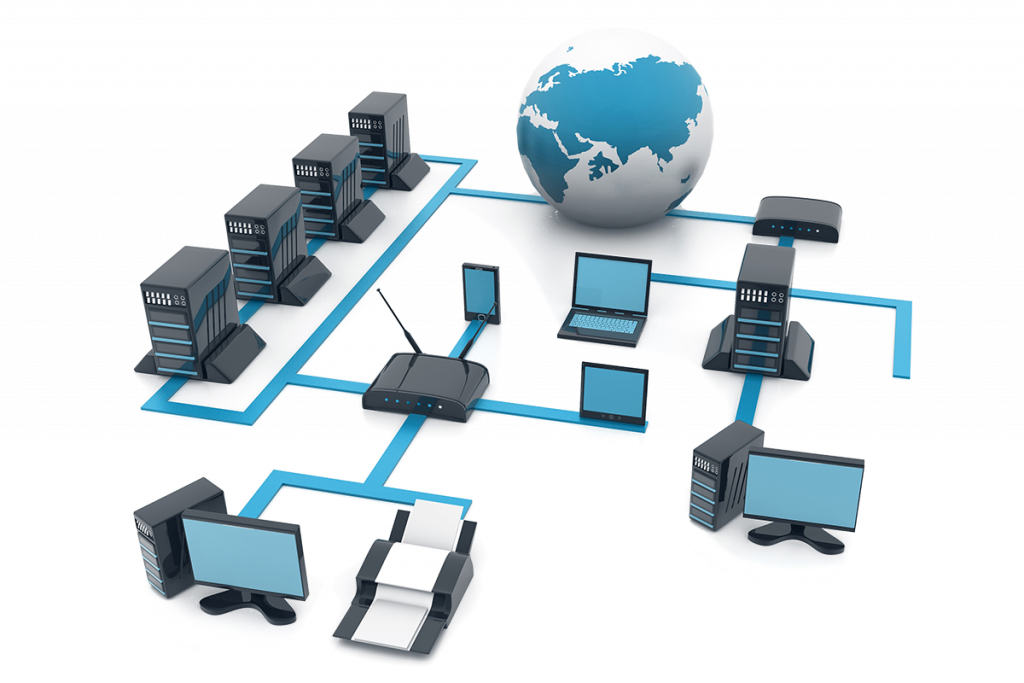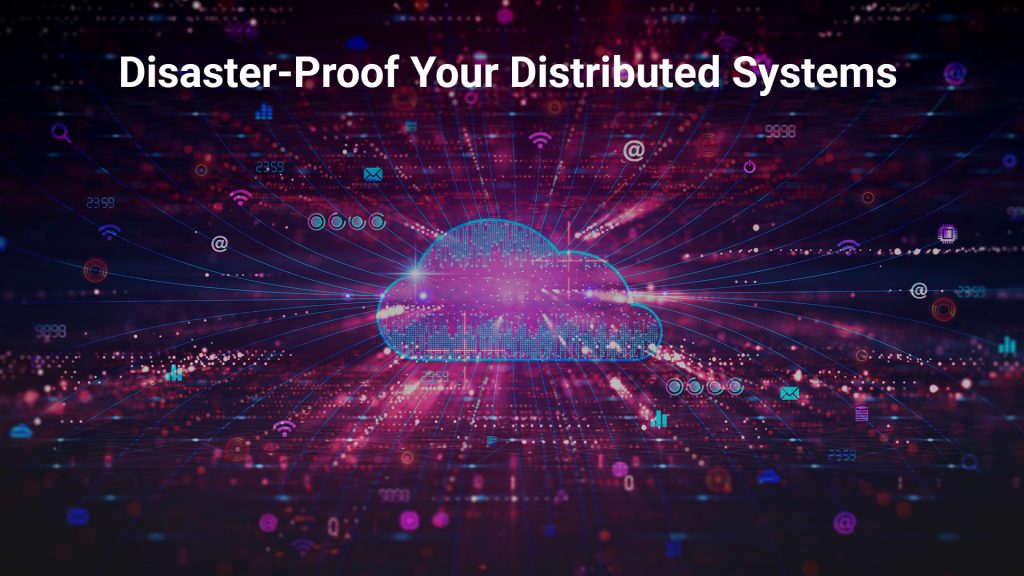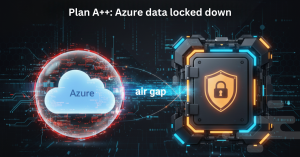What happens if a seemingly minor glitch cascades into a catastrophic system failure and your data, scattered across a complex distributed network, are inaccessible and potentially compromised? This nightmare scenario keeps business owners and IT professionals up at night as it could cost your business dearly in downtime, lost revenue, and tarnished reputation.
Today’s businesses rely on intricate distributed systems, which, while offering scalability and flexibility, also introduce unique vulnerabilities. Ensuring reliable disaster recovery and data security within these complex environments is a challenge that demands a proactive, comprehensive approach.
Read on for some essential knowledge and strategies to safeguard your cloud data, fortify your distributed systems, and ensure business continues as usual in the face of disaster.
What is a Distributed System?
A distributed system is a network of interconnected computers that work together as a single, unified entity. Unlike traditional systems, where all components are located in one place, a distributed system spreads its components—like data, processing power, and storage—across multiple machines, clouds, or even geographical locations. This setup offers several advantages:
- Scalability: Easily handle increased workloads by adding more nodes to the network.
- Fault Tolerance: If one component fails, others can step in, minimizing the impact on the system.
- Performance: Tasks can be processed in parallel across multiple machines, speeding up execution.
- Data Accessibility: Data stored in multiple locations ensures it’s available even if one site experiences an outage.
These are all great advantages but a distributed nature also introduces some challenges, especially with disaster recovery. Coordinating recovery across multiple sites and ensuring data consistency requires specialized strategies. This is why disaster recovery is so crucial for distributed systems.

Now that you understand the structure of distributed systems let’s explore how to approach disaster recovery as a crucial part of resilience.
Importance of Disaster Recovery in Distributed Systems
Can your distributed system withstand a major outage? What if a key data center went offline? While distributed systems are built for redundancy, they are not immune to disaster. A single point of failure can interrupt or completely halt operations, leading to financial losses and damage to your brand. Here’s why disaster recovery is essential:
Minimize Downtime and Data Loss:
Disaster recovery plans, including checkpointing and stable storage, help minimize data loss and ensure faster recovery.
Compliance and Regulations:
Many industries have strict regulations around data protection and business continuity. Effective disaster recovery ensures compliance and avoids penalties.
Cost Savings and Efficiency:
Although complex, disaster recovery can save significant expenses long term. Techniques like cloud-based recovery and DRaaS improve efficiency and cost-effectiveness.
Reputation and Customer Trust:
Prolonged outages can damage your reputation. Effective recovery shows a commitment to reliability and security, maintaining strong customer relationships.
While the distributed nature of these systems offers inherent redundancy, proactive backup strategies are essential. Let’s delve into the specific techniques for safeguarding your cloud data.
Backing Up Cloud Data: Strategies and Locations
Backing up data is fundamental to disaster recovery. When your data is in the cloud and spread across multiple locations, you need a strategy to ensure redundancy and quick recovery. One effective approach is multi-region backups, which involve storing data in multiple geographical regions. This ensures accessibility even if one region experiences an outage.
Or you can use cross-cloud backups: using multiple cloud providers to mitigate the risk of provider-specific outages. Incremental backups are also beneficial; instead of performing full backups each time, you save only the changes made since the last backup, which saves time and storage space.
Additionally, automated backup solutions can schedule and manage backups without manual intervention, reducing the risk of human error. These strategies collectively help maintain data integrity and availability, ensuring your business can quickly recover from any disaster.
Beyond backups, a comprehensive disaster recovery plan encompasses several other critical considerations.
Here’s What Else You Should Consider
When disaster strikes, the speed and efficiency of your recovery procedures are crucial. To ensure you’re prepared, remember:
- Regular Testing: Regularly test your disaster recovery plan to identify any gaps or weaknesses.
- Clear Documentation: Maintain clear and accessible documentation of your recovery procedures.
- Automated Failover: Implement systems that can switch to backup systems without manual intervention, minimizing downtime.
Pricing Considerations
Cost is a significant factor in disaster recovery planning. When considering the financial aspect, it's crucial to evaluate several key elements to ensure your investment provides value and sustainability.
First, avoid pricing models that start low but increase steeply, commonly known as "hockey stick pricing." These models might appear affordable initially but can quickly become cost-prohibitive as your needs grow. Instead, look for transparent pricing structures that scale predictably with your usage. This predictability helps in budgeting and avoids unexpected financial burdens as your system scales.
Stage2Data offers clear and predictable pricing to protect customers from the pitfalls of hockey stick pricing models. They focus on providing transparent, scalable pricing that adjusts according to the customer's actual usage and needs. This approach eliminates the risk of sudden, steep price increases and helps businesses plan their budgets more effectively.
“The biggest development we’re seeing is people leaving DR service providers in search of better ones. They want to avoid billing surprises where their DR providers bill them based on predicted numbers and then increase their bill amount every month, blaming unpredictable factors.
Stephen Pyott, Chief Revenue Office of Stage2Data
Additionally, consider the total cost of ownership (TCO). TCO includes not just the direct costs of purchasing and maintaining disaster recovery solutions but also indirect costs such as downtime, data loss, and potential regulatory fines. For instance, the financial impact of an outage can be substantial, affecting not only immediate operations but also long-term revenue and customer trust. By accounting for these indirect costs, you can make a more informed decision about the value and effectiveness of different disaster recovery options.
Service Level Agreements
SLAs are critical when working with disaster recovery services. Ensure your SLAs cover:
Security and Compliance
Security and compliance are essential in disaster recovery. When systems fail, protecting sensitive information becomes critical. Implement data encryption, adhere to regulations, and maintain strict access controls. These measures protect your data and your organization’s reputation and financial well-being.
Adding Network Recovery-as-a-Service (NRaaS™)
NRaaS™ offers a comprehensive disaster recovery solution for distributed systems. It provides a scalable, cost-effective, and expertly managed approach to disaster recovery, ensuring business continuity during disruptions.
Stage2Data's NRaaS™ is a comprehensive solution that takes disaster recovery to the next level. Unlike traditional DR solutions that primarily focus on data recovery, NRaaS encompasses the entire network infrastructure, including files, programs, and servers. It ensures that your business can quickly and seamlessly recover from disruptions, minimizing downtime and financial losses.
The Bottom Line
Effective disaster recovery in distributed systems is a necessity, not a luxury. Implementing robust backup strategies and efficient recovery procedures, along with leveraging solutions like Network Recovery-as-a-Service (NRaaS), can significantly enhance your system’s resilience.
By prioritizing disaster recovery, you safeguard your business against data loss, minimize downtime, and ensure continuity. Remember, investing in a comprehensive disaster recovery plan today is far more cost-effective than facing the potential financial and reputational damage of unplanned outages. Secure your cloud data now to protect your business’s future.





